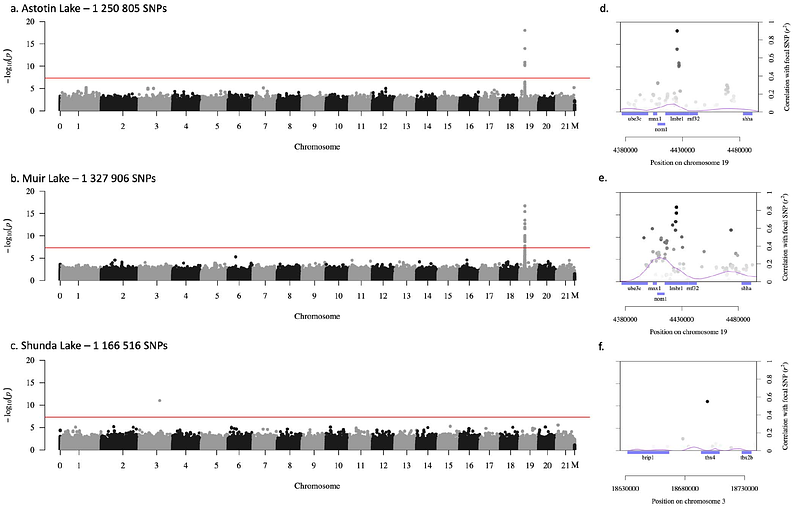Same trait, different genes: pelvic spine loss in three brook stickleback populations in Alberta

Same trait, different genes: pelvic spine loss in three brook stickleback populations in Alberta
Mee, J. A.
AbstractThe genetic basis of phenotypic or adaptive parallelism can reveal much about constraints on evolution. This study investigated the genetic basis of a canonically parallel trait: pelvic spine reduction in sticklebacks. Pelvic reduction has a highly parallel genetic basis in threespine stickleback in populations around the world, always involving a deletion of the pel1 enhancer of Pitx1. In three populations of brook stickleback in Alberta, Canada, pelvic reduction did not involve Pitx1. Instead, pelvic reduction in one population involved a mutation in an exon of Tbx4, and it involved a mutation in an intron of Lmbr1 in the other two populations. Hence, the parallel phenotypic evolution of pelvic spine reduction across stickleback genera, and among brook stickleback populations, has a non-parallel genetic basis. This suggests that there is redundancy in the genetic basis of this adaptive polymorphism, but it is not clear whether this indicates a lack of constraint on the evolution of this adaptive trait. Whether the different pleiotropic effects of different mutations have different fitness consequences, or whether certain pelvic reduction mutations confer specific benefits in certain environments, remains to be determined.


